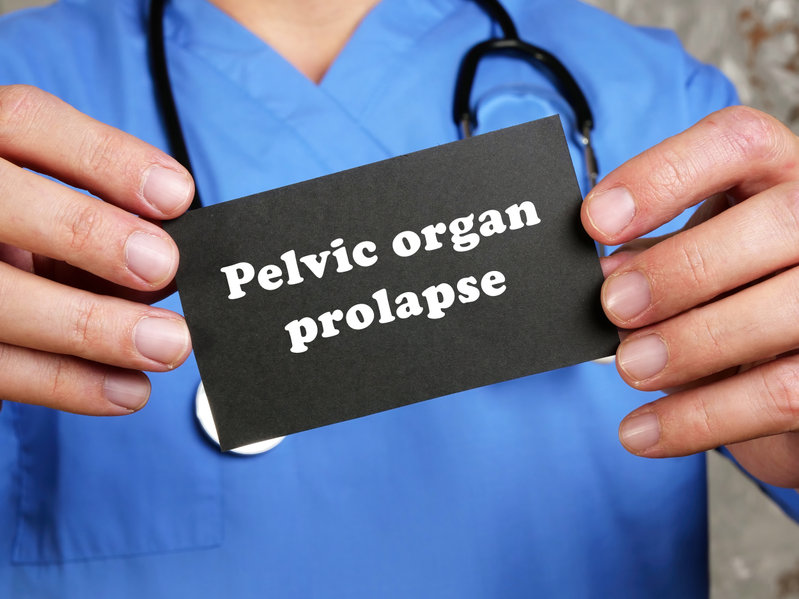Pelvic Organ Prolapse: Causes, Symptoms & Treatment Options
Women are constantly going through bodily and hormonal changes. It is important that we understand our changing bodies and know what is going on. There are certain things women should be aware of when noticing body changes. Such as, Pelvic Organ Prolapse (POP). Pelvic organ prolapse affects almost 3 percent of women in the United States and an estimation has shown that up to half of women over the age of 50 have some degree of pelvic organ prolapse.
What is Pelvic Organ Prolapse and what causes it?
Pelvic Organ Prolapse is also known as POP. The pelvic organs consist of the vagina, cervix, uterus, bladder, urethra and the rectum. The prolapse, or the drop, happens when the tissue and muscles of the pelvis can no longer support the organs because the muscles are too weak or damaged. Which can result in one or more pelvic organs to press or drop into or out of the vagina.
Pelvic organ prolapse can occur when the muscles or connective tissues of our pelvis do not work like they should. The common risk factors are:
- Childbirth: vaginal childbirth can stretch and strain the pelvic floor, which could cause POP. Women who have had multiple child births are also at a higher risk for POP later in life. However, POP can happen to women who have never given birth or to women who have a C-section delivery as well.
- Aging: POP is more common in women who are older. 37 percent of women who are between the ages of 60 to 79 have pelvic floor disorders and about half are women who are over the ages of 80.
- Hormonal changes during menopause: women going through and after menopause lose their female hormone, estrogen, which can increase their risk to POP
- Genetics: family history of POP may play a role in pelvic organ prolapse.
- Long-term pressure on your abdomen, which could be pressure from obesity, chronic coughing or straining that often occur during bowel movements.
What are the symptoms of Pelvic Organ Prolapse?
Not all women show signs of these symptoms even though many women have some degree of POP. However, women who do show signs of symptoms may experience the following:
- Discomfort, pain, or pressure
- Discomfort during physical activity or sex
- Seeing or feeling a bulge, which could feel like “something coming out” of the vagina
- Leaking of urine or problems with bowel movement
- Having trouble inserting a tampon
- Pelvic pressure that gets worse with standing, coughing, or as the day goes on
If you feel that you have one or some of these symptoms always consult with your healthcare provider for proper diagnosis of POP.
What are the treatments for Pelvic Organ Prolapse?
As with any illness or disorders, treatment will be dependent on the diagnosis given to you. Treatment for POP will depend on the type of prolapse you have, symptoms, age, any underlying health conditions, and your sexual activity. There are two types of treatment, nonsurgical and surgical.
Nonsurgical treatment options are:
- Pelvic floor exercises: these exercises help you strengthen your pelvic floor muscles.
- Pessary: a removable device that comes in many shapes and sizes. This device is inserted into the vagina to help support the pelvic organ(s) that has prolapsed or “dropped”
Surgical treatments options are:
- Surgery to support the uterus and vagina: this type of surgery is recommended for sexually active women with severe prolapse. The doctor may use your own body tissue or a synthetic mesh to repair the prolapse and build support for your pelvic floor muscles. This surgery can be done through your abdomen or vagina, however, due to safety concerns mesh is no longer used to repair the prolapse of the vagina
- Colpocleisis: this surgery is done to close the vagina, which treats the prolapse by closing the vaginal opening. This type of surgery could be recommended to women who do not plan to have or no longer participate in vaginal intercourse.
Keep in mind treatment options always vary with every woman. Some women may not have to have surgical treatment and some women might. Women who receive surgical treatment are recommended surgery as POP has impaired their quality of life or because of the severe and significant discomfort they feel.
Every body is different which means every body will require different types of treatment. Always consult your doctor or professional to get the proper and correct treatment needed for YOU.
Conclusion
It is important to always note and recognize the changes in our body. Sometimes these changes may be scary, but there are services out there that will help women go through these changes and help us to better understand them. If you would like to know more about POP or have any questions concerning POP make an appointment with Dr. Dadgar, contact Shady Grove Gyn Care today.

